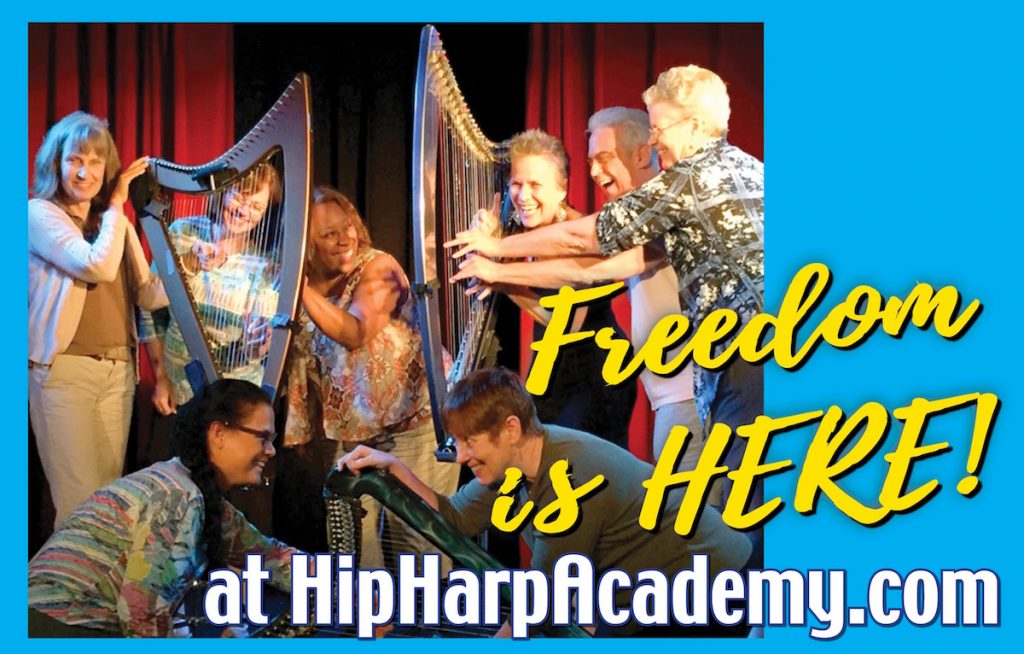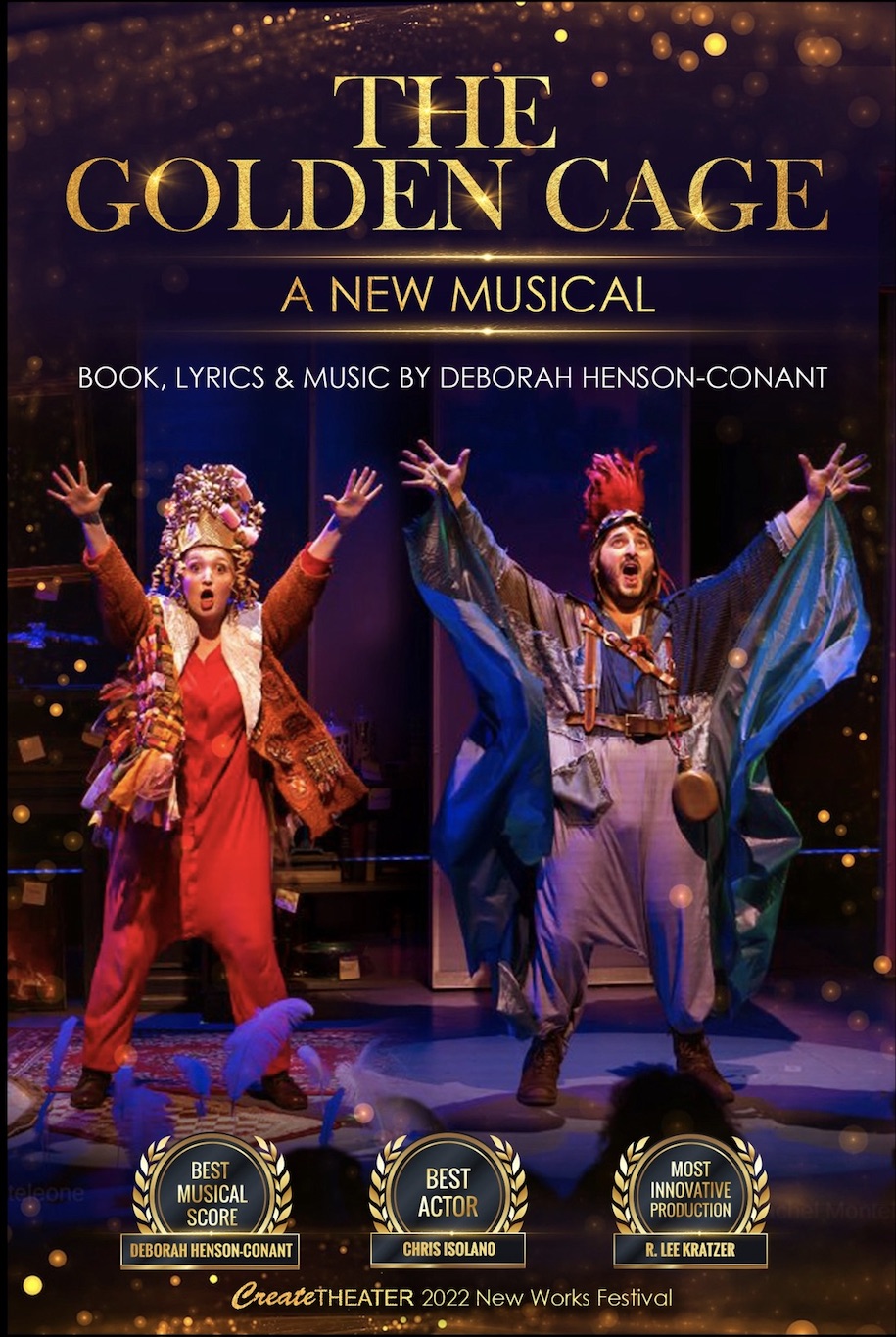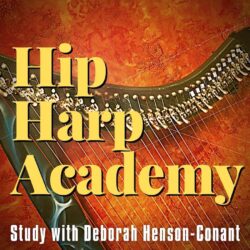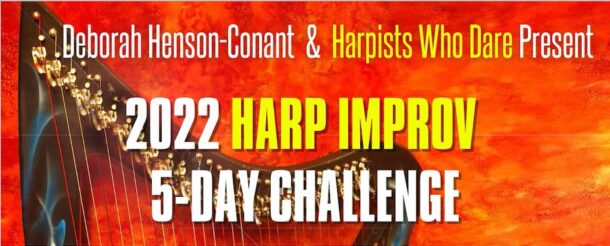
Welcome to Hip Harp Academy Member Spotlight Series: Power of Pattern Quarter (Part 1 of 3)
For this year’s third quarter, Hip Harp Academy Members poured out their creativity to the next level, putting their creative expression into forms so that they can share it with others. And now, I’m sharing them with you!
Scroll down to see the projects – but first, take a moment to think about the power of people sharing their creative PROCESS instead of a PERFECTED “PRESENTATION.” What you’ll learn from these videos – and the mini-interviews in which they share their process – will be far more inspiring to your creativity than someone sharing a trendy video with five gazillion hits. This is creative process – and in these shares, you get to glimpse into the process of other people like you and HOW they overcame their own blocks to accomplish their next creative goal.
The Hip Harp Academy Members’ Final Beginning Project
How to enjoy these wonderful video shares: Enjoy the creativity and the willingness to share. Think about the fact that each of these videos is a unique creation – none of these musicians are playing written sheet music – they’ve created these arrangements by learning the fundamentals of arrangement and improvisation and putting them into play – literally – in their own creations. And notice how different each video and each project is from the others … and yet they were all taking the exact same class.
This is the power of learning the tools of self-expression and creativity.
“Final-Beginning” is a term we use remind ourselves that these are not meant to be “Final” projects. If we worry about making them ‘FINAL’, we’d never share! Instead, we learn to embody a moment of completion as a new beginning: to acknowledge an accomplishment as something that opens up a new door, a new place to stand in, a new level of confidence – not the FINAL – it’s not the END … but the new BEGINNING.
So think about that as you watch them and read their own account of their personal creative journey in creating each video by clicking the toggle beneath each video – and I encourage you to do that if you really want to be inspired.
Some of the players have played for years, and even decades – some have come to the harp as adults – some even as a retirement gift for themselves. We’re a community connected by a commitment to creative expression. Every week we meet for masterclasses and training, and during the week we practice the new ideas and the willingness to be vulnerable, authentic and self-expressed with our instruments, our voices and ourSELVES.
So be inspired by that commitment, let it infuse your own life – and if you play the harp, come join us at Hip Harp Academy.
Romana:
You can easily improvise just following the patterns and as long as you enjoy it, it doesn’t matter how simple or obvious the music is.
Romana's Insights about this Project
Describe your final project so I know exactly what you’re sending me.
Simple arrangement and improvisation on Bach’s chorale Jesu, Joy of Man’s Desiring.
What principles from this course or from chats did you use to develop, perform, and record this project – and how did they play a part in your process?
Following a pattern makes it easier to make arrangements and to improvise.
Give a short description of what it took for you to be able to play what you did – both logistically and emotionally.
It took some practice and I also had to overcome the fear of ruining a notorious composition.
What freedoms and blocks within yourself did you connect with (or struggle with) in the process?
Following the chords and the patterns of the song gave me total ease, especially when I stopped thinking about how obvious my choices were and judging myself.
What challenges did you meet while connecting with your own freedom of expression in this project?
The biggest challenge for me is always my lack of harp technique and self-questioning.
What other parts of your life were impacted by what you learned in this class, and how?
I don’t need to justify the way I play, simple patterns are enough.
What were your personal “Ahas”?
You can easily improvise just following the patterns and as long as you enjoy it, it doesn’t matter how simple or obvious the music is.
Debra Sawyer:
Patterns exist everywhere. In music, in behavior, in nature, in our social beings. But it’s in music the awareness is now more acute for me and how I hear as well as interpret music.
Debra's Insights about this Project
Describe your final project so I know exactly what you’re sending me.
Recording of Sous Chef performances. First 15 seconds is live performance at MC Octfest atop Sunset Grill with 25-30 mph winds – Conducive Conditions. The Studio recording is about 4.5 minutes – long song!
What principles from this course or from chats did you use to develop, perform, and record this project – and how did they play a part in your process?
This course helped focus my understanding and exploration of the pattern and the pentatonic scale of this blues tune. The Blues Challenge loosened my grip on the form and inspired my improvisation and control of dynamics throughout the piece. The chat snippets also contributed to my improvisation.
Give a short description of what it took for you to be able to play what you did – both logistically and emotionally.
The challenge of performing this piece was constant repetitive work on the balance and contrasts of expression, breathing space, and timing between the harp and voice. Because of the low bass, constant damping was necessary- using the damping as a strategy in expression and making transitions smooth is a continual practice.
What freedoms and blocks within yourself did you connect with (or struggle with) in the process?
Freedoms were letting loose my right hand to find common tone notes and chording as the left hand held steady the pattern – and doing that while singing. My blocks were self/critical judgement as I got looser and looser in the scale and octaves. I dont really know if the way I’m playing it works.
What challenges did you meet while connecting with your own freedom of expression in this project?
REmembering the sequence of lyrics was and still is a challenge. I think of it now as a story-play of flirting and seduction and that helps. Challenge number 2 the damping technique. The electric harp produces such low rumble, important to pay attention to and control.
What other parts of your life were impacted by what you learned in this class, and how?
Patterns exist everywhere. In music, in behavior, in nature, in our social beings. But it’s in music the awareness is now more acute for me and how I hear as well as interpret music.
What were your personal “Ahas”?
Finding that my practice has become more focused on how to practice for performance.
Is there anything else you want people to know when they watch your video?
It’s messy and I can never do it the same way twice, a well 😉
Harpists Who Dare!
Are you ready to free yourself from the notes on the page?

Mona Seering:
Mary Robinson:
I’m rather happy with a number of recordings I’ve made–now that I’m watching them after the fact. Not all obviously. But a few.
Mary's Insights about this Project
Describe your final project so I know exactly what you’re sending me.
made in response to a request to show left-hand ideas for The Butterfly Slip Jig. Er — Tell me if it piques your interest in Irish tunes! And if it’s interesting and engaging. (Sally–someone said hey submit it so I did, but I’m not sure if you have too many already. If so, nvm me.)
What principles from this course or from chats did you use to develop, perform, and record this project – and how did they play a part in your process?
**
Give a short description of what it took for you to be able to play what you did – both logistically and emotionally.
**
What freedoms and blocks within yourself did you connect with (or struggle with) in the process?
**
What challenges did you meet while connecting with your own freedom of expression in this project?
**
What other parts of your life were impacted by what you learned in this class, and how?
**
What were your personal “Ahas”?
I’m rather happy with a number of recordings I’ve made–now that I’m watching them after the fact. Not all obviously. But a few.
Is there anything else you want people to know when they watch your video?
Would you watch more of this kind of video if I made them?
Harpists Who Dare!
Are you ready to free yourself from the notes on the page?

Leah Selker:
The community vibe in class had a really positive impact on me even though I wasn’t tremendously present it still left an encouraging and positive impact.
Leah's Insights about this Project
Describe your final project so I know exactly what you’re sending me.
Applying blues scale to play along with the doors.
Describe your written materials – if there’s anything in particular you want to say about it to help people know what they’re looking at, add that here.
Just me having fun with the blues scale with the doors “la woman”
What principles from this course or from chats did you use to develop, perform, and record this project – and how did they play a part in your process?
The blues scale makes almost everything about this
Give a short description of what it took for you to be able to play what you did – both logistically and emotionally.
I just had to go for it and accept that time isn’t infinite.
What freedoms and blocks within yourself did you connect with (or struggle with) in the process?
Time and also time. The freedom of having my own schedule has both been liberating and difficult. I have a lot of freedom and many sets of keys and instruments to my devices. I love it but it can be a struggle to play them all. The 19 string harp a friend let me recently stopped holding a tune on middle C, hence I have nearly completely given up on playing it. I also really need to restring my 36 string harp. I’ve found that when I put in new nylon strings they need to be returned constantly or they get harder to keep a tune later? Is that just me or my harp?
What challenges did you meet while connecting with your own freedom of expression in this project?
The harp difficulties listed and my time management and busy schedule but also just my own prioritization needs to be fixed. I need to reorganize my mind, my room, my life. I really want to acquire a nicer harp as soon as I can.
What other parts of your life were impacted by what you learned in this class, and how?
The community vibe in class had a really positive impact on me even though I wasn’t tremendously present it still left an encouraging and positive impact.
What were your personal “Ahas”?
Blues scale, 7 chords
Sally Walstrum:
Harpists Who Dare!
Are you ready to free yourself from the notes on the page?

PROJECTS & PERFORMANCES:
FOR HARPISTS:
- Join Hip Harp Academy
- Harp Time Live (FREE Weekly Playalong)
- FREE Resources





Join for Freebies, Stories & News
Join to get weekly-ish emails with stories, videos & events like concerts & classes
Yay! You should get my next newsletter within the next 7-10 days. I'm so happy we'll be in touch!
I won't ever share your email address with others - and you can unsubscribe anytime, tho most people say they really enjoy these weeklish emails.